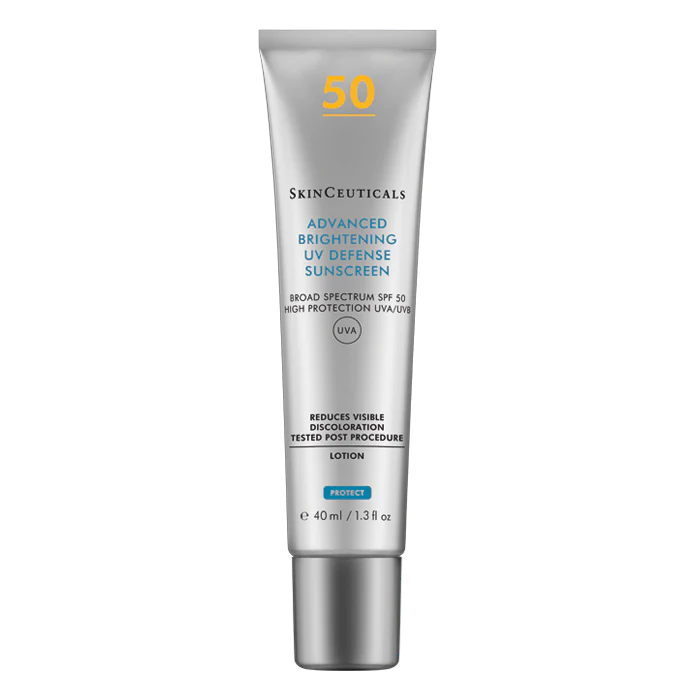Hyperpigmentation is an umbrella term used to define common skin conditions — including post-inflammatory hyperpigmentation (PIH), melasma and sun spots — in which patches of skin become darker than the surrounding area. The darkening of the skin results from an excess in melanin — the natural pigment that determines skin, hair and eye colour — and frequently appears on the face, hands and other parts of the body regularly exposed to sunlight.
Common hyperpigmentation triggers include UV-ray exposure, heat (for melasma), hormonal changes and taking certain medications, such as nonsteroidal anti-inflammatory drugs (NSAIDs) and tetracyclines. Illness such as Addison's disease, hyperthyroid disease, are conditions that can cause hyperpigmentation. Haemochromatosis which is an disorder of iron overload can cause a grey discolouration on the skin as it impacts the liver. Darker skin types can show thickened skin discolouration caused by insulin resistance, obesity, and polycystic ovary syndrome.
Treatment options.
While usually treated topically at home, most hyperpigmentation also can be treated in-clinic with chemical peels; only certain mild cases can be treated with lasers, because light and laser can trigger inflammation which can cause more hyperpigmentation.
I believe that the correct homecare is key to achieve real results that can be sustained. Pigmentation has a memory so whilst you may get rid of visible pigmentation it can return with a vengeance if you do not keep to a regular routine that includes a good broad spectrum SPF. Some people find that heat is the trigger for their pigmentation. Another important factor is to find out if the pigmentation is surface pigmentation or dermal pigmentation. Dermal pigmentation is ,ore difficult to treat.
Retinoids - also known as Vitamin A - Preparations include retinoic acid, tretinoin, adapalene and tazarotene. They work to reduce hyperpigmentation through multiple mechanisms, increasing cell turnover, reducing melanin transfer via melanosomes, and allowing increased penetration of other active ingredients.
L-ascorbic Acid - is pure vitamin C, is the most potent form of vitamin C and can be the most beneficial. It decreases melanin production by interacting with copper ions at the tyrosinase active site, which inhibits the action of the enzyme tyrosinase. Vitamin C is a powerful antioxidant clinically proven to reduce hyperpigmentation due to its photoprotective properties. For it to be effective it needs to have a low PH to allow it penetrate, so care is required to ensure very delicate or reactive skin is allowed time to acclimatise.
Niacinamide - Also known as vitamin B3 and nicotinamide, niacinamide is a water-soluble vitamin that works with the natural substances in your skin to help visibly minimise enlarged pores, tighten lax pores, improve uneven skin tone, soften fine lines and wrinkles, diminish dullness, and strengthen a weakened surface. It improves pigmentation by preventing the transfer of melanosomes from melanocytes to the keratinocytes. It is an important component of many over the counter lightening creams .
Kojic acid. This naturally occurring fungal product derived from certain species of acetobacter, aspergillus and penicillium. It works by reducing the production of free tyrosinase and is a powerful antioxidant.
Liquorice derivatives. Liquorice is a root extract from glycyrrhiza globra. It has many important properties, such as anti-inflammatory, antimicrobial, and anti carcinogenic . 
Azelaic acid is a compound found in wheat, rye and barley, typically though, it is a lab-engineered form that is used in skin care products, owing to its being more stable and effective. It can help treat acne and rosacea as it soothes inflammation. It also takes down redness, and inhibits the effects of tyrosinase, hence it treats sunspots and melasma as it blocks the production of abnormal pigmentation.
Topical azelaic acid is for prescription-strength formulas with 15 to 20% concentrations. While lower-grade options that are available over-the-counter can work, it is best to combine azelaic acid with other ingredients as it is much more effective formulae than when used alone.
#REDNESS #SKIN #SKINCARE #AZELAIC #ANTIOXIDANTS #BEAUTY #SKINCARE #NUALAWOULFE





















































